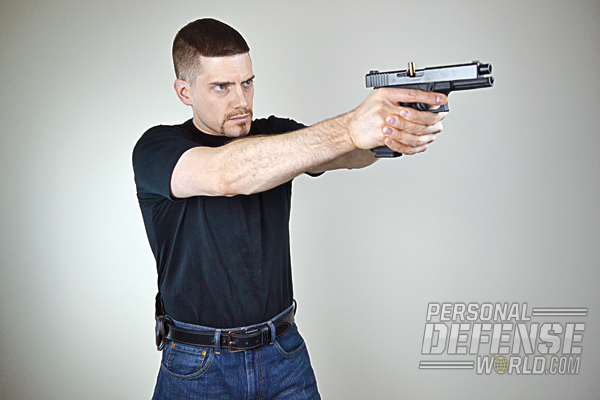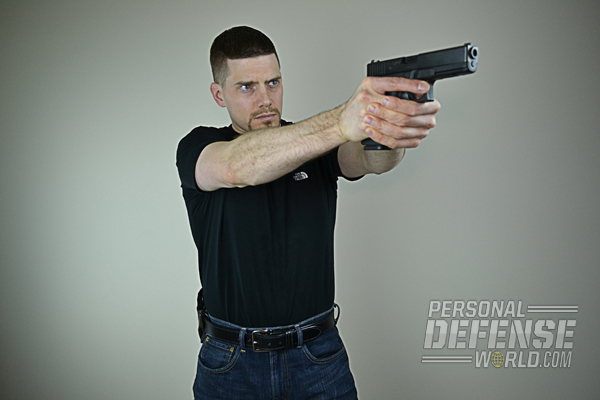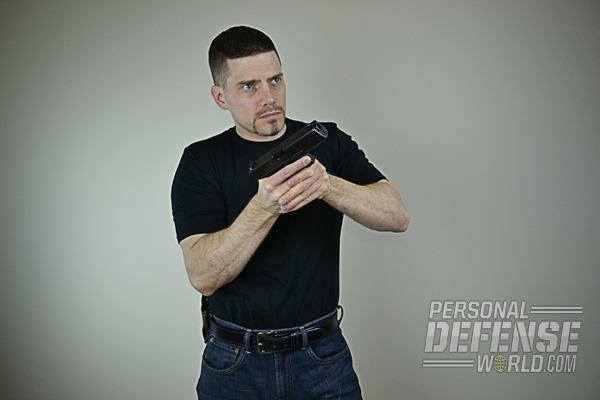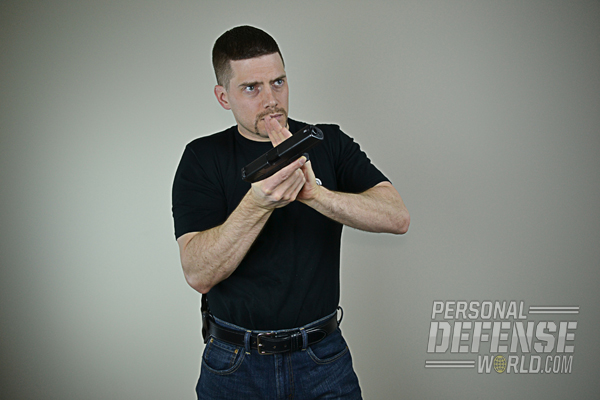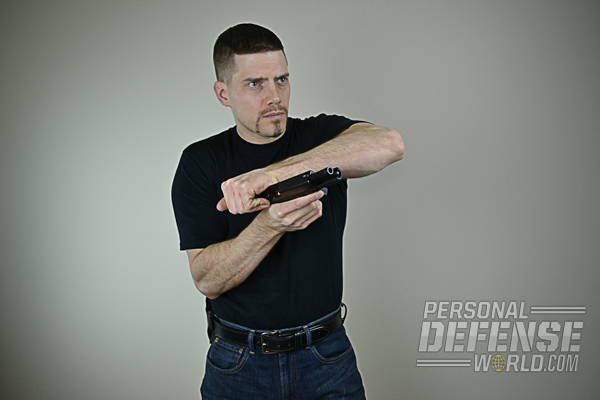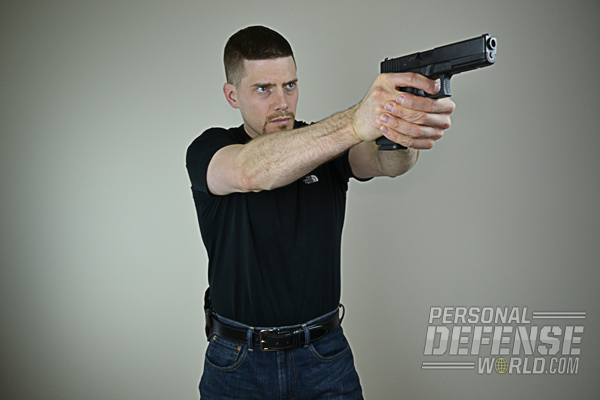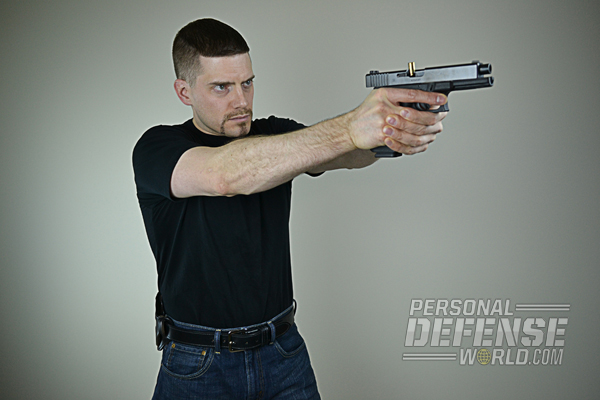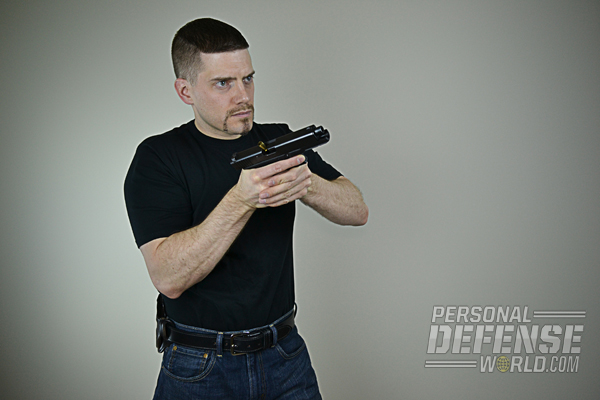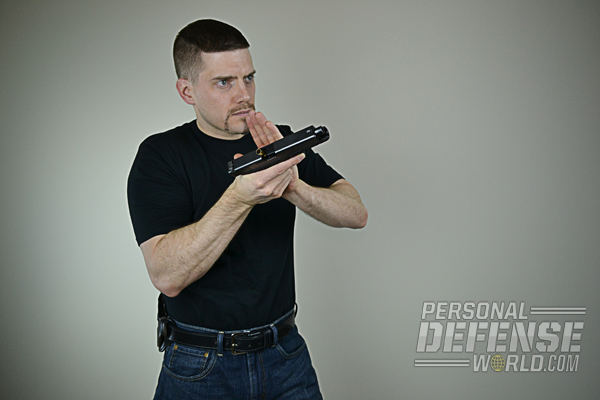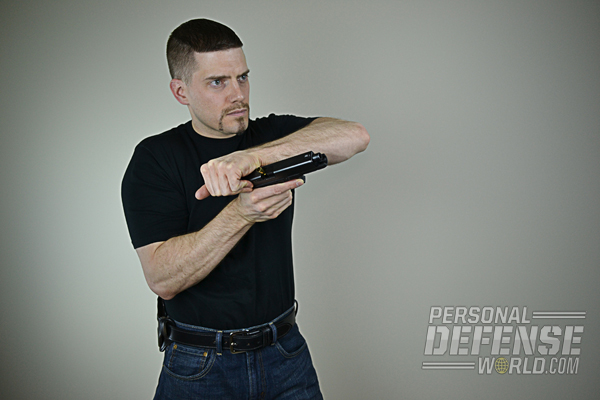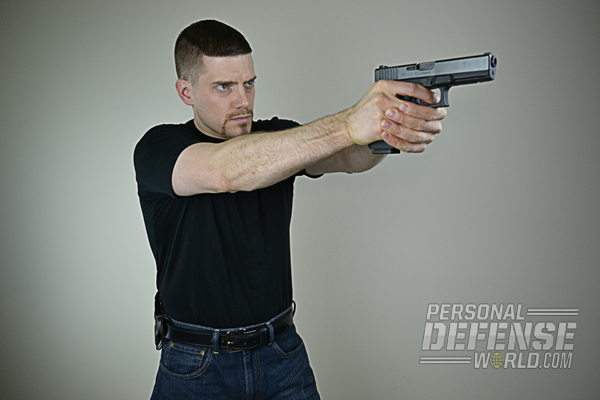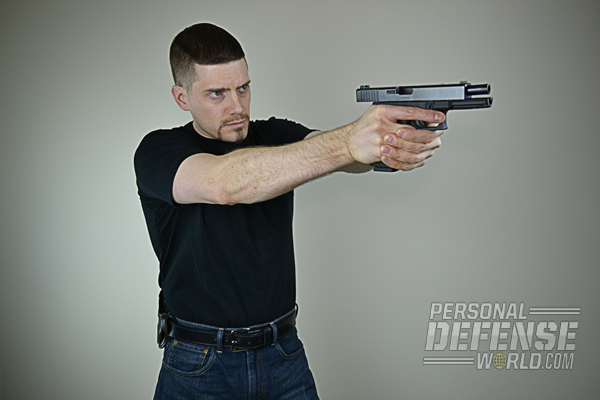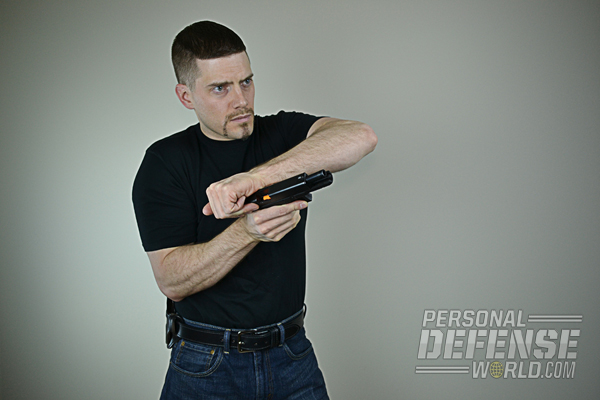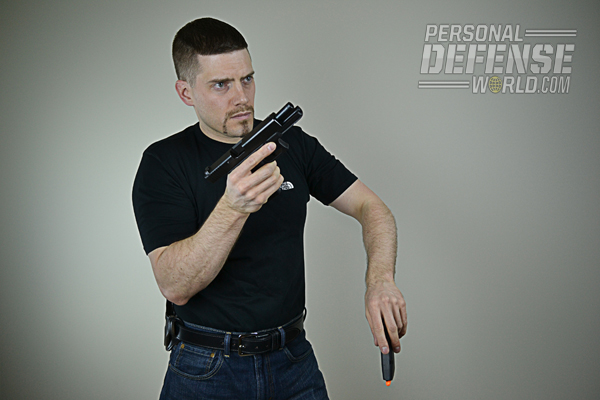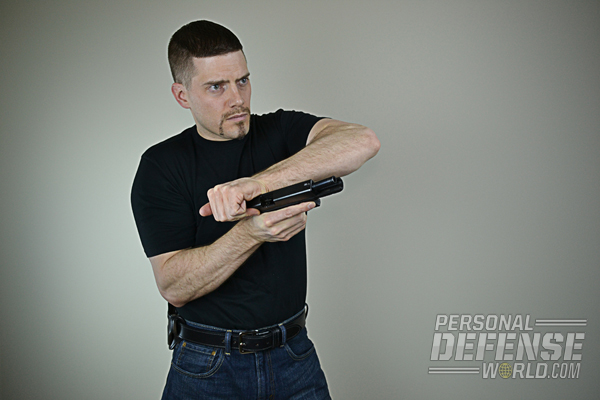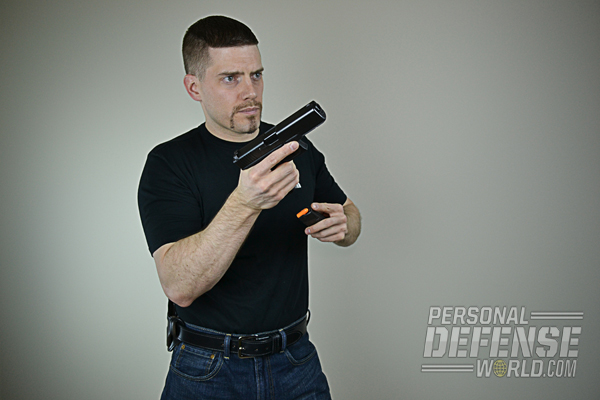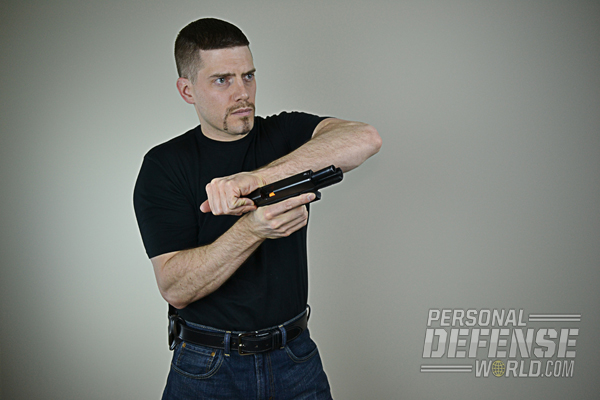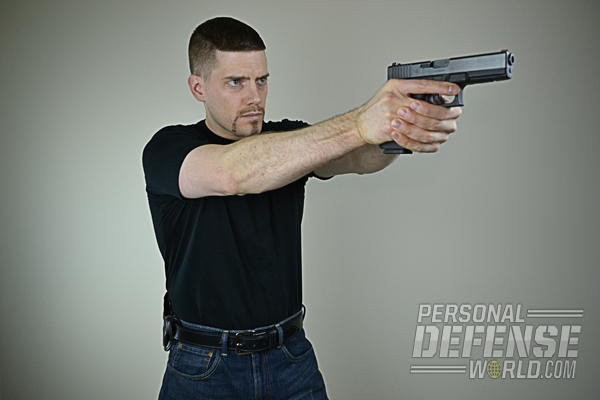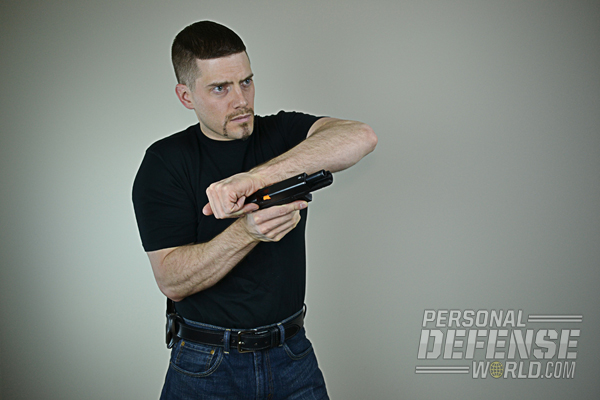
The decision to own a handgun for the purpose of defending yourself, your family and your home is one of the most significant decisions you’ll ever make. Before pulling the trigger, so to speak, you’ll first want to acquire an understanding of how handguns work and how to use it under stress.
A proper training regimen should include preparation for handgun malfunctions. No product is immune, and there’s no magic ammunition that can completely prevent it. At some point your handgun will malfunction.
When learning how to quickly fix a malfunctioning handgun, it is best to learn how to react to the malfunction without really having to assess what happened and think about what to do.
Advertisement — Continue Reading Below
Train Smart, Train Simple
Handgun malfunctions come in three general varieties: a failure to feed or fire (Type 1); a failure to eject, or a “stovepipe” (Type 2); and a double feed (Type 3). I’ve listed them in order of severity, with the first being the least difficult to resolve and the third being the most. The goal of any training program should be simplicity and efficiency.
Type 1 Malfunction
Advertisement — Continue Reading Below
The Type 1 malfunction is commonly referred to as a failure to feed or a failure to fire (FTF). The key symptom of a Type 1 is the dreaded click when you press the trigger. The common causes are (1) a failure to fully seat a magazine, which can result in the handgun not being able to load the chamber, and (2) a faulty cartridge, or “bad round,” which can result when ammunition has been manufactured with defects. There are other reasons why you would get a Type 1 malfunction, but the above are by far the most common in a handgun that is otherwise operating properly.
So you’ve pressed the trigger, and instead of the anticipated bang you hear a click. The goal now is to perform the following sequence without stopping to assess what happened or why: (1) Bring your shooting arm’s elbow back to your ribcage; (2) while keeping the muzzle target-oriented, rotate the ejection port clockwise toward the ground; (3) using the palm of your off-hand, with your fingers pointing up, sharply smack the base of the magazine to ensure it is fully seated; (4) using an overhand grip, rip-rack the slide like you are trying to rip it off of the frame; and (5) reestablish your grip and drive your sights back on target. This is often referred to as a tap-rack.
Type 2 Malfunction
Advertisement — Continue Reading Below
The Type 2 malfunction is often referred to as a “stovepipe,” or a failure to eject (FTE). Its key symptom is referred to as a dead trigger, meaning that when you press the trigger nothing happens—no click, no bang, just mush. FTE malfunctions gained the nickname stovepipe because, when a fired case fails to properly eject and becomes trapped in the feed/ejection port pointing upward, it looks like a stove’s exhaust pipe.
Common causes for a Type 2 are (1) limp-wristing, or not providing solid enough resistance for the handgun during recoil; (2) impeding the slide during recoil; (3) underpowered ammunition; and (4) a broken/malfunctioning extractor, ejector or magazine. By far, the first two are the most common causes of a Type 2 malfunction. Again, the error is usually the operator’s, which is a good thing, because faulty operation is easier to fix than a mechanical failure.
Advertisement — Continue Reading Below
The response to a Type 2 is identical to that of a Type 1: an aggressive tap and rack. The reason this works is that the next round to feed from the magazine helps push the stovepiped empty case out of the feed port, and with the feed/ejection port rotated toward the ground, gravity helps the case fall out of the ejection port.
Type 3 Malfunction
Advertisement — Continue Reading Below
The Type 3 malfunction, commonly called a “double feed,” is the mother of all malfunctions, short of a stuck case or a catastrophic part failure that renders the handgun inoperable. The key symptom of a Type 3 is identical to that of a Type 2: a dead trigger. In a handgun, a Type 3 is the result of a live round heading into an already loaded chamber. Double feeds are fairly uncommon in handguns; I have seen them happen more frequently with semi-automatic carbines like the AR-15, which feeds from magazines that almost have a true double-presentation-style feeding system with dual feed ramps. However, the problem sometimes arises in handguns being operated under extreme stress.
With a Type 3, you will experience a dead trigger. If your training kicks in, you will immediately perform a tap-rack as if responding to a Type 2. Doing so, you will notice that the slide has stopped short: Now you have a train wreck in your feed port.Without stopping to think or assess, (1) bring your shooting arm’s elbow back to your ribcage; (2) lock the slide open by simultaneously engaging the slide stop with your shooting hand’s thumb and using an overhand grip with your offhand to rip-rack the slide to the rear like you are trying to rip it off the frame; (3) using your off-hand, rip the magazine from the mag well and throw it to the ground (4) while keeping the muzzle target-oriented, rotate the ejection port clockwise toward the ground; (5) using an overhand grip, rip-rack the slide three times, again as though you are trying to rip it off of the frame; (6) perform an emergency reload; and (7) reestablish grip and drive your sights back on target. Rip, roll, rack, reload.
The Takeaway
Advertisement — Continue Reading Below
The goal of these drills is to utilize essentially the same motor responses for each type of malfunction. This means less thinking and more doing. Remember, time is not on your side when you’re in a fight and trying to fix a malfunctioning handgun. The basic tap-rack should be your reflexive response when your handgun doesn’t respond to a trigger press. If that doesn’t fix the problem, immediately go to rip, roll, rack, reload. Again, the goal is to skip over the process of “look-think-assess” and jump directly to “react.” This type of training is just as important for self-defense as is learning how to accurately fire your handgun.
